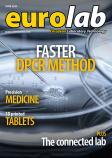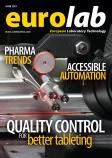Neil Pullman explores the differences between Building Information Modelling levels, their benefits and what it means for the pharmaceutical sector
For many years, the construction industry was said to be behind the times in adopting new technology.
While the automotive, energy and aerospace industries evolved and incorporated concepts such as Industry 4.0, construction was left behind.
In 2011, the UK Government formed a new mandate calling for the construction and infrastructure sectors to adopt the Building Information Modelling (BIM) concept as a way of changing the dynamics and behaviours of the industry.
By incorporating BIM Level 2, the Government hoped to trigger a revolution in the sector and welcome a new era of digital construction.
But what does this mean for the businesses working with this new breed of construction company?
What is BIM?
BIM is all about integration. It is a concept which manages information from a variety of sources linked with the construction, renovation or demolition of a building.
The key output of the process is a digital model of the building. The level of detail within this drawing is dependent on the criteria the developer is using.
BIM in pharmaceuticals
When building cleanrooms and laboratories, there are many more factors to be taken into consideration than in a conventional office.
With working parts built into the structure of a room, an object orientated database needs to be created detailing exactly how equipment works.
While BIM promotes best practice, it’s important to involve the client as early as possible to see to what extent they will use the model post-build.
While many within the pharmaceutical sector can see the benefits of BIM, some are reluctant to embrace it. This is attributed to a lack of understanding of the concept.
While there is a natural progression towards the standard, a debate has emerged about when to train people on BIM.
Up until now the process has evolved organically, and it will continue to do so as people introduce the skills to those entering the sector.
Soon we will reach critical mass where decision makers are educated in BIM and incorporate it in all their projects.
Benefits of BIM to the pharmaceutical sector
One of the key benefits of incorporating BIM into a pharmaceutical build is the ability to detect clashes and extract data from the model.
With a 2D model, it is very easy to miss clashes which can cause severe problems when the facility is in construction. A 3D CAD model allows you to de-risk construction, minimalising problems on site.
BIM is a powerful tool for showing clients exactly how their facility will work. GlaxoSmithKline (GSK) is a prime example of a client which has embraced BIM. We have carried out construction works on several GSK sites within the UK.
For each one we have produced a full 3D model, providing users with almost photographic images of the proposed facility.
The collaborative process allowed us to work off-site and pre-fabricate certain elements of the build, which were then installed later.
BIM ensured that all the pre-fabricated elements fitted perfectly with the pre-installed elements.
Without BIM, the idea of pre-fabricating a build would not be possible. The process not only saved time and money, but the client was left with a cleaner site throughout the build.
The seeds of revolution have been sown in the construction industry, but for the BIM concept to be truly embraced, suppliers must continue to educate and inform clients of its benefits, post-construction.
Neil Pullman is principal architect at Boulting Environmental Services.






